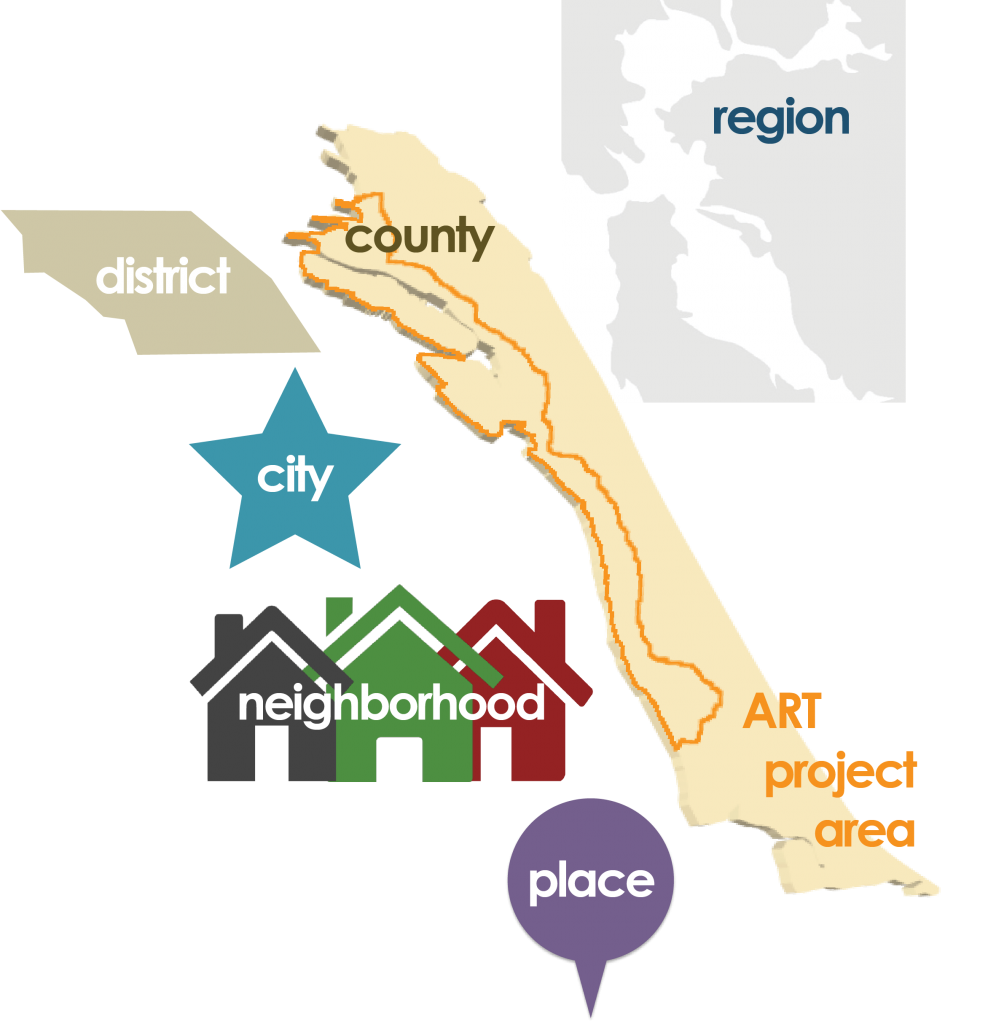The various ART Projects conducted around the Bay Area have helped answer two fundamental questions about the appropriate scope and scale of adaptation planning:

- How does scope and scale, including the geographic extent of the project area and the assets or sectors included, affect the assessment and planning outcomes?
- How can adaptation planning clearly and transparently identify and communicate issues that cut across different asset and geographic scales?
In order to answer these questions, the project scope included multiple asset categories and jurisdictions, and the assessment of vulnerability and risk was conducted across varying asset scales. This multi-sector, multi-jurisdiction approach shed light on the benefits and constraints that scope and scale play in adaptation planning.
Scales in ART
At the scale of the entire project area the assessment was conducted for each asset category (e.g., wastewater), for asset systems (e.g., a wastewater service district), for individual assets (e.g., a wastewater treatment plant), and for components of individual assets (e.g., a pump station). Some of the individual and component assessments focused on unique assets in the project area while others focused on representative assets in the case where it was not possible to consider all individual assets within an asset category.
Geographic scale matters
Broad-scale, e.g., city, district, county, assessments are better for revealing functional relationships and vulnerabilities that cut across different asset categories or sectors. These cross-cutting issues can result in potentially significant or unexpected consequences if not identified and addressed.
Many important relationships and dependencies that are revealed would likely be overlooked if the assessment were conducted at a more focused geographic scale. Broad-scale assessments can also be helpful in prioritizing and phasing actions in an efficient manner that takes equity, economy, environment and governance into consideration.

Focused-scale, e.g., neighborhood or place-based, assessments are generally necessary to obtain a sufficiently specific and refined understanding to support the development of adaptation responses that are directly responsive to individual asset vulnerabilities and risks. Prior to developing responses that can be implemented, particularly for physical vulnerabilities, assessments must be conducted at this smaller geographic scale.
Asset scale matters
Assessment at the asset category or sector scale can reveal similarities in physical characteristics, complexities in regulatory and other decision-making processes, and the overall lack or ease of access to high quality information across a variety of asset categories and sectors.
Assessment at the individual asset or component scale can reveal specific vulnerabilities often caused by particular physical and functional characteristics. For some assets, information challenges that prevented gaining a detailed understanding of vulnerability and the potential to respond only become apparent with a more focused look at individual asset or components.
Assessment and planning within a single asset category or sector can provide a deep understanding of asset-specific vulnerabilities which, in turn, can lead directly to development and implementation of adaptation responses. However, solely taking this approach can result in overlooking functional vulnerabilities caused by relationships among different asset categories or sectors.
Assessment and planning across multiple asset categories or sectors are important for identifying functional vulnerabilities and critical relationships among asset categories and sectors, and, in turn, can help in developing a comprehensive understanding of cumulative and indirect (secondary) vulnerabilities and the potential to respond in a coordinated or holistic manner.

For more information:
- Jackie Mandoske
- Jaclyn.Mandoske@bcdc.ca.gov
- 415-352-3631